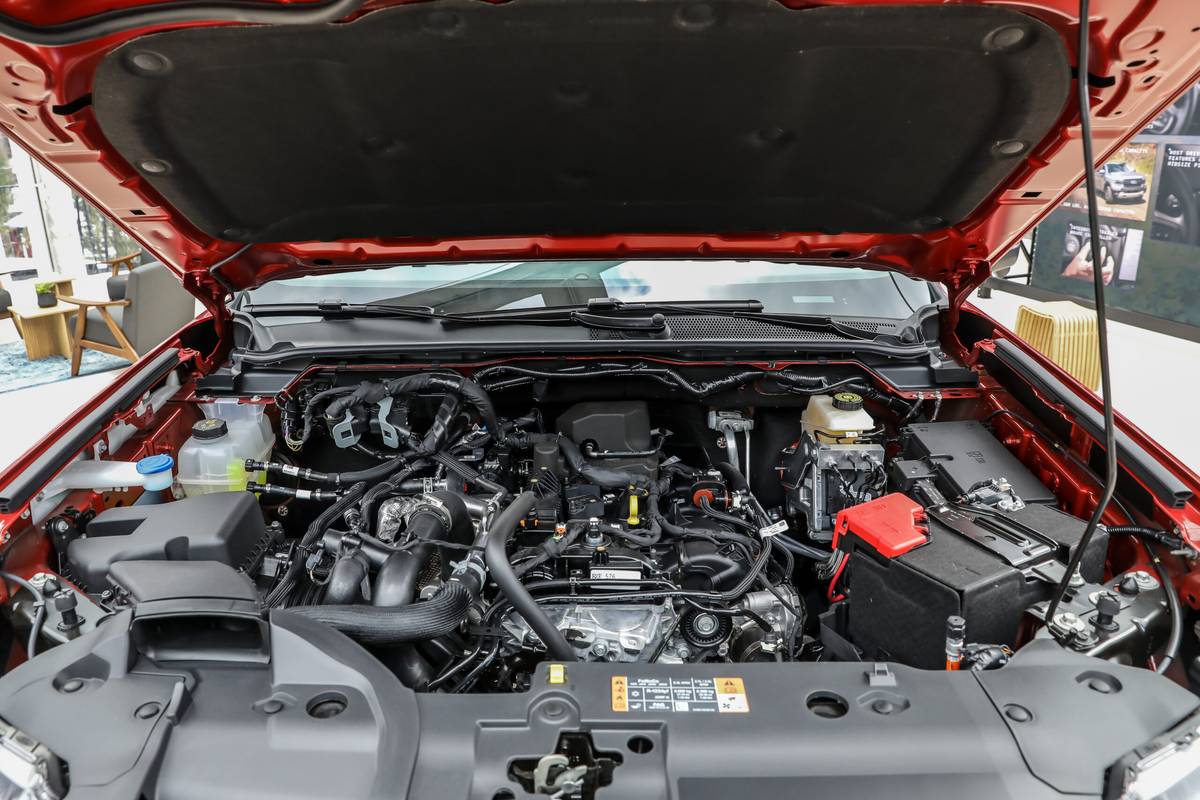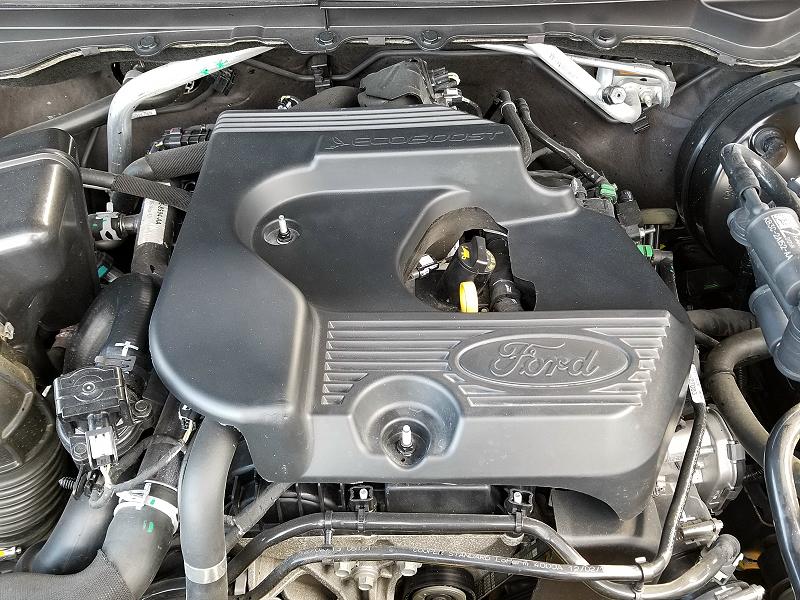Get to Know the Power and Reliability of the 2.2 Ford Ranger Engine for Any Job
Get to Know the Power and Reliability of the 2.2 Ford Ranger Engine for Any Job
Blog Article
Recognizing the Fundamentals of Vehicle Engines: Kinds, Features, and Functions

Overview of Auto Engines
A cars and truck engine works as the heart of a lorry, transforming gas right into mechanical energy to thrust it onward. This intricate system comprises different elements that operate in unison to guarantee optimal efficiency and efficiency. The fundamental procedure of a cars and truck engine entails the inner burning procedure, in which fuel and air are mixed, sparked, and removed to produce power.
The engine's style can substantially influence its efficiency, fuel performance, and exhausts. Secret components consist of the cylinder block, pistons, crankshaft, and camshaft, each playing a vital role in the engine's overall function.
In enhancement to these components, engines typically make use of various systems such as gas injection, ignition, and cooling systems to boost efficiency and long life. Understanding the fundamental mechanics of auto engines is crucial for identifying problems and executing upkeep, inevitably adding to the automobile's dependability and performance in time.

Kinds of Auto Engines
Vehicle engines can be categorized into several kinds based on their style, gas kind, and functional concepts. 2.2 ford ranger engine. The most common classifications consist of internal burning engines (ICE), electric engines, and hybrid engines
Interior burning engines, which can be more split into gas and diesel engines, run by igniting a fuel-air mixture to produce power. Gasoline engines are commonly lighter and smoother, while diesel engines are more fuel-efficient and offer higher torque.
Electric engines make use of electric power stored in batteries to power an electrical motor, supplying immediate torque and absolutely no discharges during operation. As modern technology breakthroughs, electrical lorries (EVs) are increasingly becoming popular for their ecological advantages and lower running prices.
Crossbreed engines combine elements of both inner burning and electric engines, permitting versatile power resources and improved gas effectiveness. They can operate in numerous modes, utilizing either the gas engine, the electric motor, or both all at once.
Each sort of engine has distinct benefits and downsides, affecting their application in various lorry types and market sections, from compact cars and trucks to durable vehicles. Understanding these kinds is necessary for making informed choices relating to lorry selection and efficiency assumptions.
Engine Features Explained
Recognizing engine features is vital for understanding how vehicles run efficiently. At the core of any type of internal combustion engine lies the essential process of converting fuel right into mechanical power. This procedure starts with the consumption stroke, where air and fuel are drawn into the burning chamber. Following this, the compression stroke presses the air-fuel blend, enhancing its temperature and pressure.
The ignition happens next, stiring up the mix and developing a fast expansion of gases. This force drives the piston down throughout the power stroke, which inevitably converts into the rotational motion of the crankshaft. The exhaust stroke then expels the spent gases from the chamber, giving way for a brand-new cycle to begin.
Along with these main functions, engines also incorporate systems that take care of air conditioning and lubrication, ensuring optimum functional temperatures and reducing rubbing in between moving parts. This detailed interaction of features allows the engine to top article generate the power required for automobile propulsion while maintaining effectiveness and dependability. Recognizing these features gives useful understanding right into the intricacies of auto engineering and improves the capability to detect and address engine-related concerns efficiently.
Key Engine Functions
Engine layout encompasses numerous essential features that considerably affect efficiency, resilience, and efficiency. One of one of the most vital facets is the engine setup, that includes inline, V-type, and level styles. Each configuration impacts the engine's power, dimension, and balance result, therefore impacting total automobile dynamics.
One more important feature is the engine displacement, referring to the complete volume of all cyndrical tubes. Larger displacements usually yield even more power but might compromise gas efficiency. Engine materials additionally play a crucial function; lightweight and high-strength materials, such as aluminum and magnesium alloys, enhance efficiency without adding extreme weight.
The kind of gas injection system utilized-- such as multi-port or direct shot-- affects Recommended Reading burning efficiency and exhausts. Supercharging and turbocharging are attributes that increase engine performance forcibly additional air into the combustion chamber, raising power outcome without substantially boosting engine size.
Last but not least, the existence of innovative engine management systems optimizes fuel-air mix and ignition timing, adding to smoother procedure and far better gas economy. Jointly, these functions specify an engine's capabilities, establishing the structure for its efficiency and long life in a competitive automobile landscape.
Maintenance Tips for Engines
Appropriate engine maintenance is crucial for making sure optimal performance and long life, as disregarding routine treatment can cause significant problems down the line. To keep your engine efficiently, start with regular oil modifications, normally every 3,000 to 7,500 miles, depending on the sort of oil made use of. Fresh oil lubricates engine components, minimizing friction and wear.
In addition, monitoring coolant levels is important to stop getting too hot. Make certain that the coolant is topped up and is in good problem internet to maintain reliable temperature level regulation. Frequently change and examine air and fuel filters, as clogged filters can hinder air flow and gas shipment, endangering engine performance.
In addition, pay focus to spark plugs and ignition systems. Defective or used ignition system can lead to misfiring and reduced efficiency. Examining the battery terminals and connections for deterioration is likewise necessary, as a weak battery can influence engine beginning.

Final Thought
In summary, a comprehensive understanding of cars and truck engines encompasses different types, features, and crucial attributes that significantly affect lorry performance. Inner combustion engines, together with electric and hybrid alternatives, demonstrate varied devices for energy conversion. 2.2 ford ranger engine. Acknowledging the vital functions, such as consumption and exhaust cycles, along with critical engine attributes like arrangement and gas shot systems, equips auto owners with the expertise required for effective maintenance and operation, inevitably enhancing automobile long life and performance
An automobile engine serves as the heart of a vehicle, transforming fuel right into mechanical power to thrust it onward. The fundamental operation of an automobile engine includes the internal combustion procedure, wherein gas and air are combined, stired up, and eliminated to develop power.
Routinely change and inspect air and fuel filters, as blocked filters can impede air movement and gas shipment, jeopardizing engine efficiency. - 2.2 ford ranger engine
In summary, a thorough understanding of cars and truck engines encompasses various kinds, functions, and vital functions that substantially influence automobile efficiency. Acknowledging the vital features, such as intake and exhaust cycles, alongside vital engine features like setup and gas injection systems, outfits vehicle owners with the knowledge needed for reliable upkeep and procedure, ultimately enhancing automobile durability and performance.
Report this page